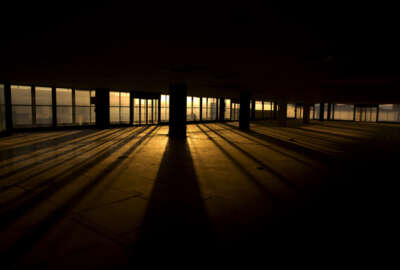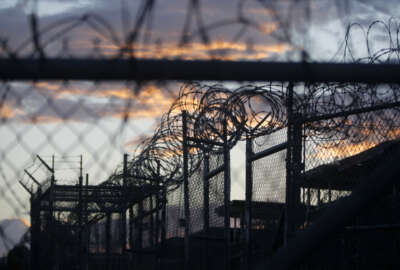
26 percent of Army hangars are in poor or failing condition
Facilities that house combat units are in bad condition and the funds are not there to fix them.
Hangars that house combat planes are in tough shape and only getting worse, says a new report issued by the Army earlier this year.
Approximately 26 percent of the Army’s hangars are failing or are in failed condition, the study stated. That’s worse than the Army’s overall facilities problem, which pegs 22 percent of all buildings in poor or failing condition.
“Aviation maintenance facilities are essential for a climate controlled, weather-protected environment to conduct maintenance 24 hours per day, seven days per week. Deficient hangars hamper maintenance operations, resulting in longer repair times and fewer aircraft available for mission requirements,” the Feb. 21 report stated.
The report was delivered to Congress on March 2.
The Army says it will take about $276 million to bring its deficient hangars to adequate condition. But that is only a short term answer to the service’s problem.
The service’s 449 hangars are continuing to deteriorate. The average age of each hanger is 35.6 years.
A total of 41 of those hangars were built in the 1930s or 1940s, 57 were built in the Korean War era and 106 were built in the Vietnam era.
The Army estimates it would cost $2.8 billion to recapitalize its aging hangars and buy-out its hangar deficit.
But, funding for infrastructure has come few, far and in between for the Army and the other military services.
The Army has a plan to bring 80 percent of its total facilities to adequate status by 2025. The cost for that is about $8 billion a year. The 2017 budget request only asked for $5 billion, however.
“This $3 billion deficit results in significant infrastructure risk that will increase the cost of future modernization and construction requirements. Based on the current funding levels, we anticipate the poor or failing condition rating of Army facilities will increase by 10.8 percent by 2025,” the study read.
The total price tag for all Army facilities comes in at about $72 billion.
“We have been on a failed funding strategy, resource strategy, with our installations and facilities,” said J. Randall Robinson, acting assistant Army secretary for installations, energy and environment said last month. “This has had a corrosive impact on our installations.”
The Pentagon as a whole reported last year that almost 19 percent of its facilities are in failing condition.
“We have over 52,000 buildings in poor or failing condition right now,” said Katherine Hammack, assistant secretary of the Army for installations, energy and environment. “The majority of our facilities budget is focused on combatant commander requirements and new missions, which for us means cyber and unmanned aircraft. What it doesn’t get after is the significant number of buildings out there that are already failing.”
Military officials have pointed out that the deterioration in DoD buildings has a lot to do with the fact that its limited maintenance dollars are spread across tens of millions more square feet of built real estate than is actually needed. In the 2017 budget, the department again called for a Base Realignment and Closure (BRAC) round in 2019.
The excess capacity problems are most acute in the Air Force and Army. Those services’ rough calculations suggest that they have 30 percent and 21 percent more facility space, respectively, than they can put to practical use.
Copyright © 2025 Federal News Network. All rights reserved. This website is not intended for users located within the European Economic Area.
Scott Maucione is a defense reporter for Federal News Network and reports on human capital, workforce and the Defense Department at-large.
Follow @smaucioneWFED
Related Stories





